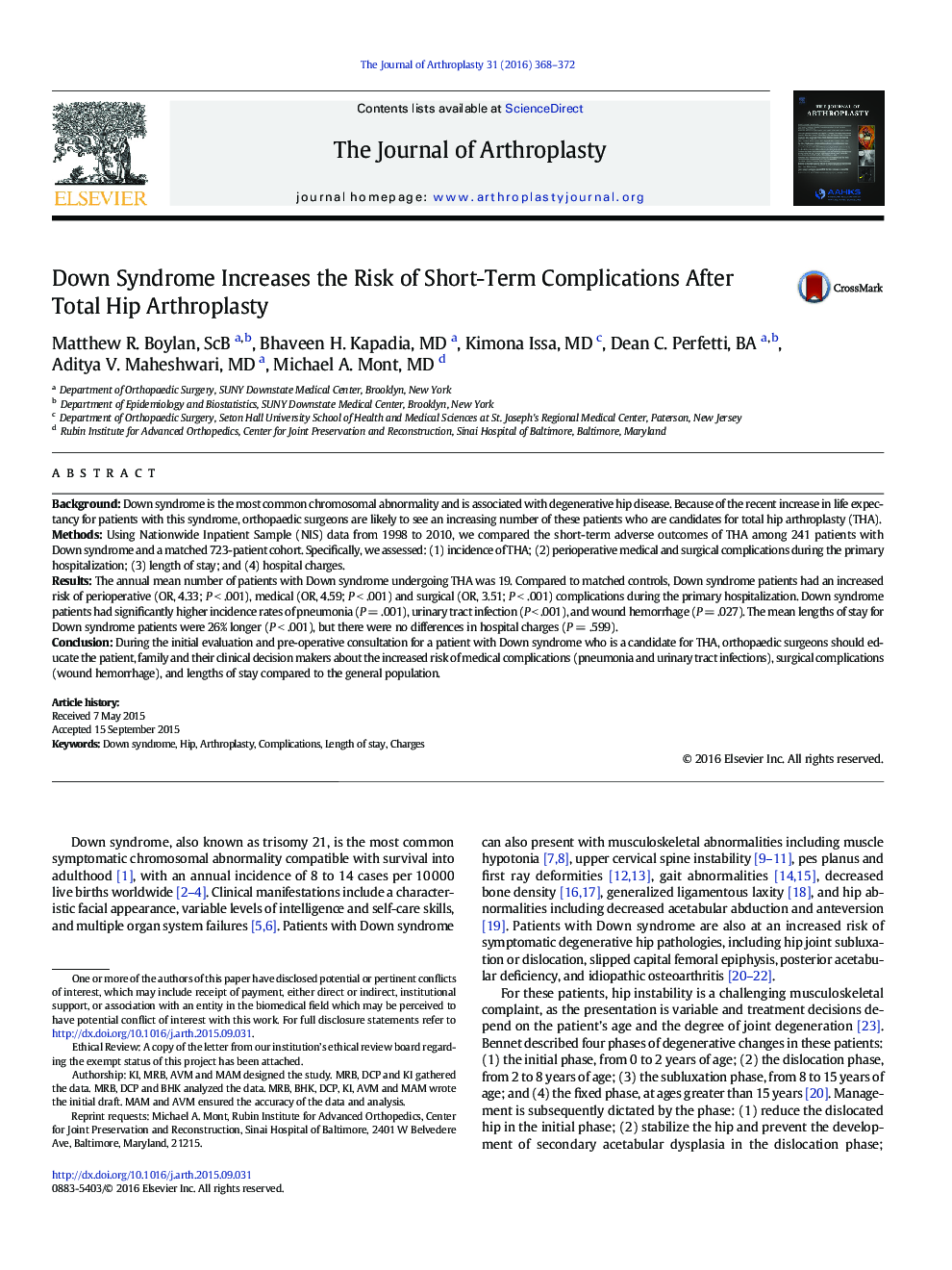| Article ID | Journal | Published Year | Pages | File Type |
|---|---|---|---|---|
| 4059917 | The Journal of Arthroplasty | 2016 | 5 Pages |
BackgroundDown syndrome is the most common chromosomal abnormality and is associated with degenerative hip disease. Because of the recent increase in life expectancy for patients with this syndrome, orthopaedic surgeons are likely to see an increasing number of these patients who are candidates for total hip arthroplasty (THA).MethodsUsing Nationwide Inpatient Sample (NIS) data from 1998 to 2010, we compared the short-term adverse outcomes of THA among 241 patients with Down syndrome and a matched 723-patient cohort. Specifically, we assessed: (1) incidence of THA; (2) perioperative medical and surgical complications during the primary hospitalization; (3) length of stay; and (4) hospital charges.ResultsThe annual mean number of patients with Down syndrome undergoing THA was 19. Compared to matched controls, Down syndrome patients had an increased risk of perioperative (OR, 4.33; P < .001), medical (OR, 4.59; P < .001) and surgical (OR, 3.51; P < .001) complications during the primary hospitalization. Down syndrome patients had significantly higher incidence rates of pneumonia (P = .001), urinary tract infection (P < .001), and wound hemorrhage (P = .027). The mean lengths of stay for Down syndrome patients were 26% longer (P < .001), but there were no differences in hospital charges (P = .599).ConclusionDuring the initial evaluation and pre-operative consultation for a patient with Down syndrome who is a candidate for THA, orthopaedic surgeons should educate the patient, family and their clinical decision makers about the increased risk of medical complications (pneumonia and urinary tract infections), surgical complications (wound hemorrhage), and lengths of stay compared to the general population.
